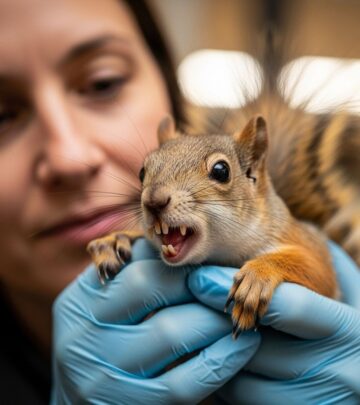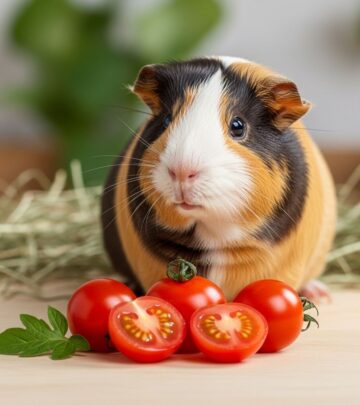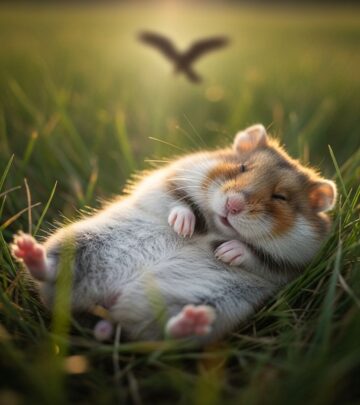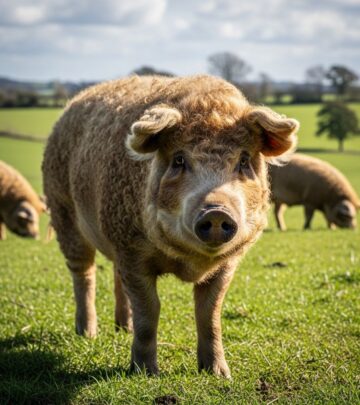Sugar Glider Care: 5 Essential Tips For Healthy, Happy Pets
Everything you need to know about sugar gliders, from their natural history to pet care essentials and health tips.

Image: HearthJunction Design Team
Introduction to Sugar Gliders
Sugar gliders (Petaurus breviceps) are fascinating small, nocturnal marsupials native to the eucalyptus and acacia forests of Australia, Indonesia, and New Guinea. These arboreal mammals are notable for their unique ability to glide long distances using a patagium, which is a specialized skin membrane stretching from their wrists to their ankles. This gliding allows them to move between trees efficiently while foraging for food, conserving energy in the process.
Growing in popularity as exotic pets, sugar gliders are admired for their intelligence, playful nature, and relatively hardy constitution. However, their care requirements are distinct and detailed knowledge is essential for prospective owners to ensure their health and happiness.
Physical Characteristics and Natural Behavior
Sugar gliders typically measure about 5 to 6 inches in body length, with their tails adding an additional 6 inches. They weigh around 4 to 5 ounces. Their most distinctive feature is the patagium, which enables gliding distances up to 50 meters. Their long tail serves as a rudder, helping them steer accurately during flight.
Another unique adaptation is the fusion of the second and third toes on their hind feet, which form a grooming comb used for cleaning their fur. Female sugar gliders have a specialized reproductive anatomy, including two lateral vaginas and a central vaginal canal, as well as a pouch with four teats where young joeys develop after a brief gestation period of about 16 days.
Natural Habitat and Diet
In the wild, sugar gliders inhabit dense forests rich in eucalyptus and acacia trees. Their diet is omnivorous and highly varied, including:
- Insects and small vertebrates
- Tree sap and gum, especially from eucalyptus and acacia
- Nectar and pollen from flowers
- Fruits and vegetables
This diverse diet supports their energetic lifestyle and nocturnal activity patterns.
Housing Requirements for Pet Sugar Gliders
Proper housing is critical to the welfare of sugar gliders in captivity. Their natural arboreal lifestyle means they need tall cages that allow climbing and gliding. Key housing considerations include:
- Cage Size: Spacious vertical cages with narrow bar spacing prevent escapes and injuries.
- Material: Preferably coated wire cages, which are easier to clean and prevent rust compared to galvanized wire.
- Environmental Enrichment: Branches, ropes, and nesting pouches encourage natural behaviors and prevent boredom.
- Temperature and Lighting: Maintain a stable, warm environment without direct sunlight; sugar gliders are nocturnal and need a consistent light-dark cycle.
The Social Nature and Behavior of Sugar Gliders
Sugar gliders are highly social animals that thrive when kept in pairs or small groups. They communicate through a series of vocalizations including barking, whining, and chirping, especially to express distress or excitement. Their playful and curious nature means they bond closely with their human caregivers when properly socialized through regular, gentle handling.
Despite their small size and endearing appearance, sugar gliders have sharp teeth and can bite if frightened or mishandled. Understanding their behavior and body language is essential to building a trusting relationship.
Diet and Nutrition for Pet Sugar Gliders
A balanced diet mimicking their natural food sources is vital for captive sugar gliders. Pet owners should focus on providing:
- Protein: Insects like crickets or mealworms, small amounts of boiled eggs, or commercial protein supplements.
- Sugars and Carbohydrates: Small quantities of fresh fruits such as apples, grapes, and berries.
- Calcium and Vitamins: Critical to prevent metabolic bone disease; use supplements as recommended by veterinarians.
- Nectar and Sap Replacements: Commercial nectar mixes or homemade formulas can substitute natural sap sources.
It is crucial to avoid harmful foods like chocolate, caffeine, and excessive fats.
Health Concerns and Veterinary Care
While sugar gliders are generally hardy, improper diet and housing can lead to various health issues, including:
- Malnutrition and calcium deficiency
- Obesity or starvation
- Stress-related illnesses
- Dental problems and infections
Regular veterinary checkups with an exotic animal specialist familiar with marsupials are recommended. Early intervention can prevent most diseases from becoming life-threatening.
Common signs that warrant a vet visit include lethargy, loss of appetite, abnormal droppings, behavioral changes, and visible injuries or swelling.
Life Span and Reproduction
In captivity, sugar gliders typically live between 10 and 15 years with optimal care. They reach sexual maturity around 8 to 12 months. Female sugar gliders have a relatively short gestation of about 16 days, after which tiny underdeveloped joeys climb into the pouch for about 50 to 74 days before emerging.
Breeding requires careful management by experienced owners to avoid genetic problems and ensure the health of both mother and offspring.
Bonding with Your Sugar Glider
Building a strong bond takes patience and consistency. Effective bonding techniques include:
- Frequent gentle handling, especially during their active evening hours
- Offering treats by hand to earn trust
- Talking softly to soothe and familiarize them with your presence
- Providing a quiet and safe environment to reduce stress
Once bonded, sugar gliders can show affection by licking and cuddling, forming rewarding relationships with owners.
Frequently Asked Questions (FAQs)
Q: How long do sugar gliders typically live?
A: In captivity, sugar gliders generally live between 10 to 15 years when given proper care, including suitable diet and environment.
Q: Can sugar gliders live alone or do they need companions?
A: Sugar gliders are social animals that do best living with at least one other sugar glider to prevent loneliness and stress.
Q: What kind of diet is best for a pet sugar glider?
A: A balanced diet with protein from insects, fresh fruits, vegetables, and calcium supplements is essential to mimic their natural dietary habits.
Q: How do sugar gliders communicate with humans?
A: They use vocalizations such as barking and chirping, body language, and trust-building behaviors like licking once bonded with their owners.
Q: What are common health issues in pet sugar gliders?
A: Malnutrition, stress, dental disease, and infections are common if their care conditions are inadequate. Regular veterinary checkups are important.
Summary Table: Sugar Glider Care Overview
| Aspect | Recommendation | Notes |
|---|---|---|
| Housing | Large vertical cages with narrow bars | Include branches, pouches, and safe environmental enrichment |
| Diet | Protein, fruits, nectar substitutes, calcium | Avoid chocolate, caffeine, and fatty foods |
| Social Needs | Live in pairs or groups | Prevent loneliness and behavioral problems |
| Health Monitoring | Regular vet visits | Watch for appetite, weight, and behavior changes |
| Lifespan | 10-15 years | Dependent on diet, care, and environment |
Conclusion
Sugar gliders are enchanting and highly social exotic pets that require dedicated care tailored to their natural habits. Understanding their unique physiology, behavior, nutritional needs, and environmental requirements ensures a happy, healthy life for these marsupials in captivity. Prospective owners should commit to providing the specialized care needed to thrive and enjoy the rewarding companionship sugar gliders offer.
References
- https://www.petmd.com/sugar-glider
- https://www.merckvetmanual.com/exotic-and-laboratory-animals/sugar-gliders/overview-of-sugar-gliders
- https://companion-animals.extension.org/sugar-gliders-a-summary-of-the-nature-and-care-of-the-companion-sugar-glider/
- https://www.apsofdurham.org/wp-content/uploads/2016/03/Sugargliders.pdf
- https://www.sciencedirect.com/science/article/abs/pii/S1055937X03000392
Read full bio of Srija Burman












